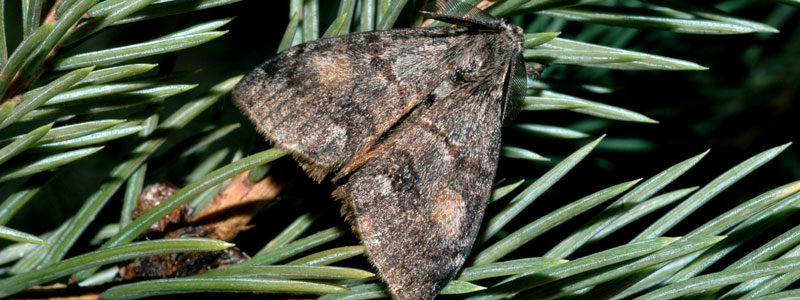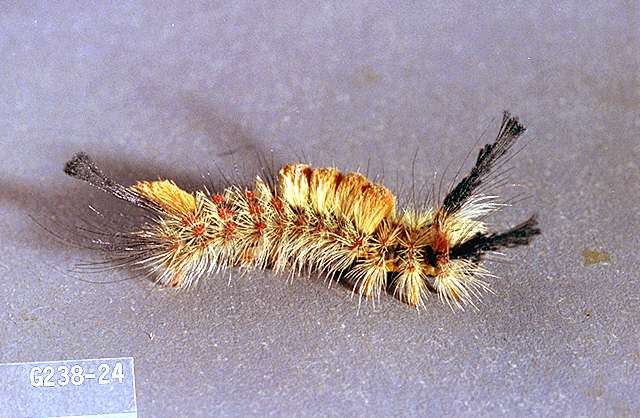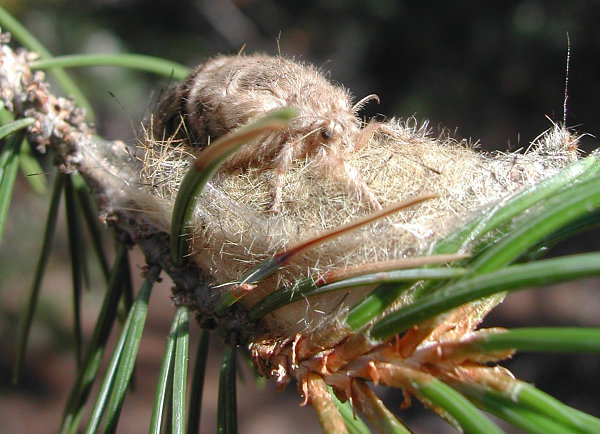Douglas Fir Tussock Moths: Understanding the Threat to Your Trees

As a tree owner, it is crucial to remain knowledgeable about different pests and diseases that can endanger the health of your trees. One such insect that warrants attention is the Douglas Fir Tussock Moth (Orgyia pseudotsugata). This native North American species has gained notoriety for its ability to defoliate and weaken Douglas fir trees (Pseudotsuga menziesii). In this article, we will explore the characteristics, life cycle, and management strategies associated with the Douglas Fir Tussock Moth.
Identification
The Douglas Fir Tussock Moth is a medium-sized moth with a wingspan of approximately 3 centimeters. The males are typically light brown, while the females are larger and have white wings. However, it is the larvae that cause the most significant concern for arborists. The caterpillars exhibit distinct tufts of hair, giving them their name “tussock.” They are mostly black with red-orange spots along their back.
As they grow, the larvae consume foliage, particularly needles of Douglas fir trees, often causing extensive defoliation.


Impact on Trees
The defoliation caused by Douglas Fir Tussock Moth caterpillars can be detrimental to the health of affected trees. Although Douglas fir trees are resilient and can recover from moderate defoliation, repeated or severe defoliation can weaken them and make them susceptible to secondary pests and diseases. The loss of foliage reduces the tree’s ability to produce energy through photosynthesis, weakening its overall vigor and potentially stunting its growth.
Management Strategies
When it comes to managing the Douglas Fir Tussock Moth, prevention and early intervention are key. Here are some strategies that can be employed to mitigate the impact of this insect:
Pruning
If feasible, manually remove tussock moth egg masses during winter or early spring before they hatch. Pruning infested branches can also help reduce the population of caterpillars.
Insecticide
In severe infestations or when other management options are insufficient, insecticides may be necessary. Consult with a qualified arborist or entomologist to determine the most appropriate and effective chemical treatments while minimizing environmental impact.
Monitoring
Regularly inspect trees for the presence of tussock moth eggs, larvae, or adult moths. Early detection can allow for timely intervention and reduce the likelihood of severe infestations.
Biological Control
Encourage natural predators, such as birds and parasitic wasps, that feed on tussock moth eggs and caterpillars. Maintaining a diverse ecosystem around Douglas fir stands can help foster natural balances.
